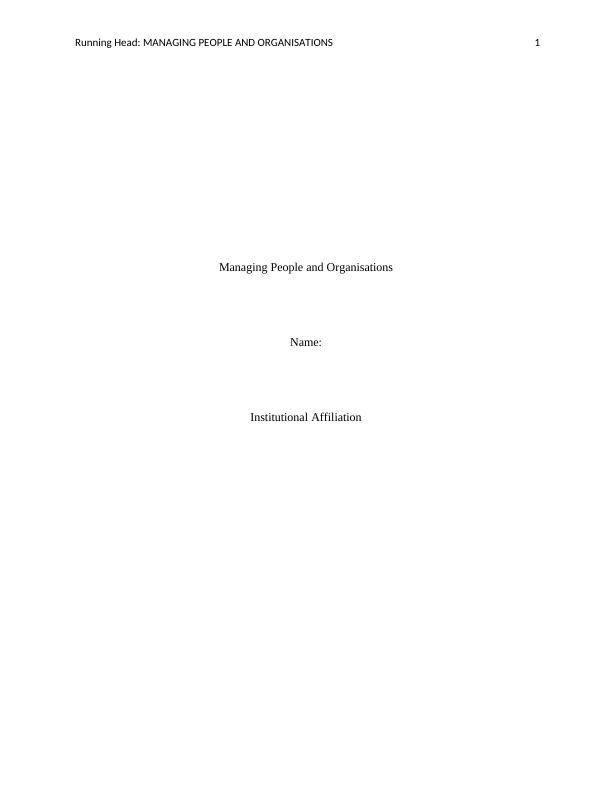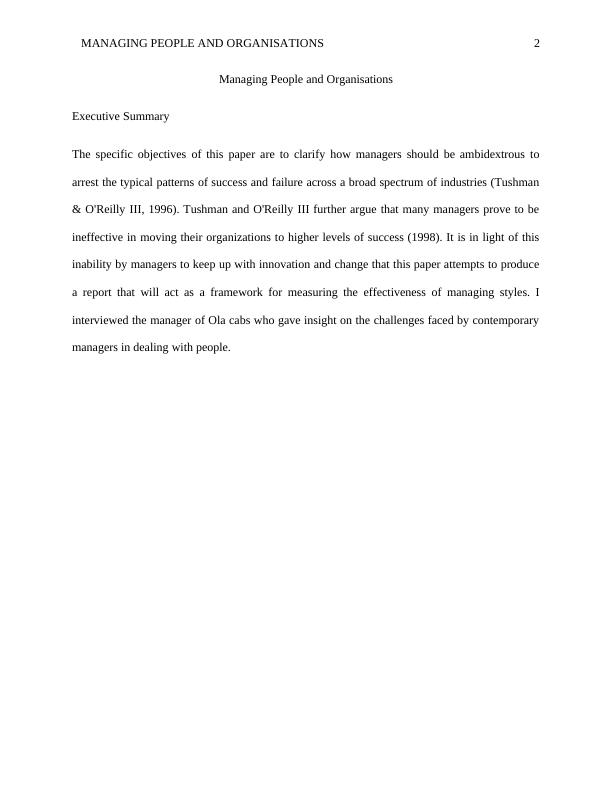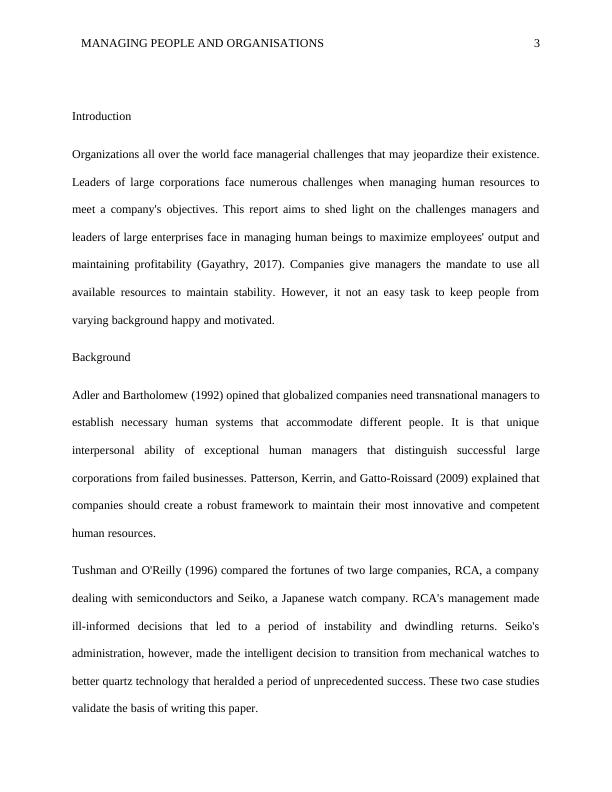Ask a question from expert
MGT600 - Managing People and Organisations
15 Pages3461 Words45 Views
ICMS International College of Management, Sydney
Managing People and Organisations (MGT600)
Added on 2021-09-13
MGT600 - Managing People and Organisations
ICMS International College of Management, Sydney
Managing People and Organisations (MGT600)
Added on 2021-09-13
BookmarkShareRelated Documents
End of preview
Want to access all the pages? Upload your documents or become a member.
Challenges Faced by Multinational Companies in Transferring HR Practices
|10
|2629
|25
Challenges and Skills in People Management
|10
|2630
|369
Human Resource Management in McDonald's
|11
|3678
|1
Management Theory and Practice- Assignment
|6
|914
|385
Critical Analysis of Two Current HR Issues
|10
|2737
|438
Managing Employee Behaviour: Challenges and Recommendations
|8
|2053
|462



